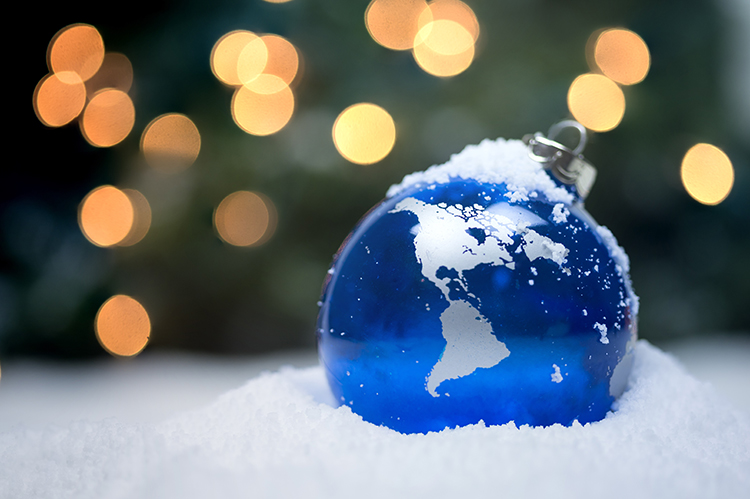
Photo: Stock Photos from THOMAS MORRIS/Shutterstock
The stockings were hung by the chimney with care…but not if you live in the UK. British children traditionally hang their stockings at the foot of their bed, unlike most Americans who observe the holiday. Such Christmas traditions vary by culture, faith, and geography. While American Christmas holds increasingly commercial sway over much of the world, fascinating and ancient ways of celebrating can be found wherever the faithful or the secular celebrate this winter holiday.
Some differences are temporal: the Russian Orthodox celebrate Jesus’ birth almost two weeks after Catholics, as they follow the Julian rather than Gregorian calendar. Other divergences are in the symbols associated with the season. In Sweden, the Yule Goat reins, while Americans picture elves. These cultural differences are only part of the history of Christmas, a holiday which has evolved with the two millennium history of Christianity. Historians generally agree that Christmas as a December holiday derives its date more from the need to appropriate a pagan holiday in newly Christian Rome. However, this celebration of Christ’s birth became an important holiday—and a favorite of many who do not identify as religious. This Christmas magic is celebrated in interesting ways all over the world.
Read on to discover diverse Christmas traditions practiced around the world.
The Gävle Goat in Sweden
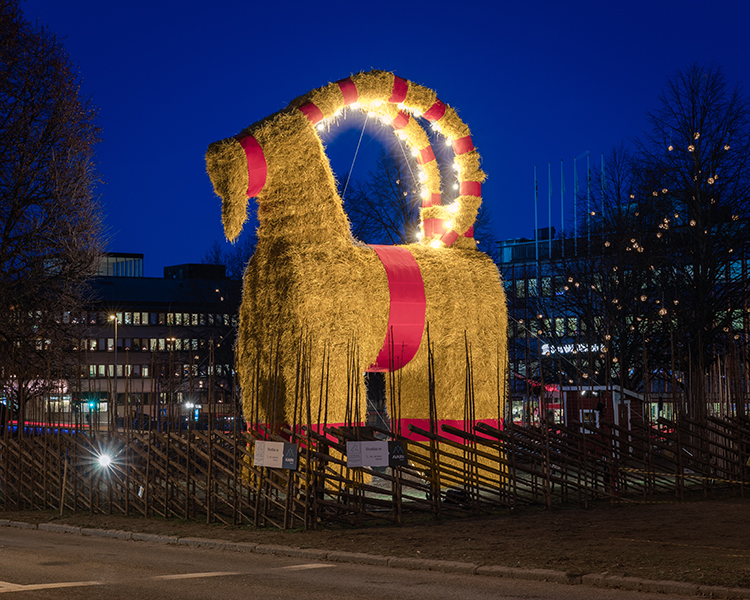
Photo: Stock Photos from TOMMY ALVEN/Shutterstock
Every year since 1966, the locals of Gävle, Sweden have constructed a giant straw Yule Goat in the Castle Square of the city at the beginning of Advent. The Yule Goat is an ancient Scandinavian symbol with pagan roots; however, the giant version was the brainchild of a creative advertising professional. From the first iteration, arson has been a bit of a problem; most of the goats have been burnt to the ground despite this being illegal.
Sharing Oplatek in Poland
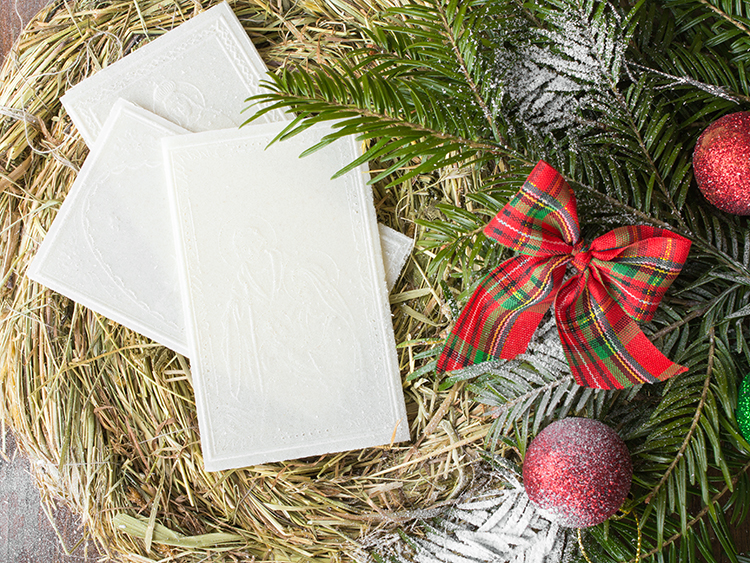
Photo: Stock Photos from JOANNA DOROTA/Shutterstock
On Christmas Eve, Polish families gather to share bits of oplatek—a thin, tasteless flour wafer stamped with Christmas imagery. Traditionally, a husband expresses his wishes and hopes to his wife, after which she takes and eats a small piece of the wafer. Then she reciprocates the sentiments. The rest of the family then expresses good wishes as they take pieces of the wafer.
Christmas Crackers in the UK
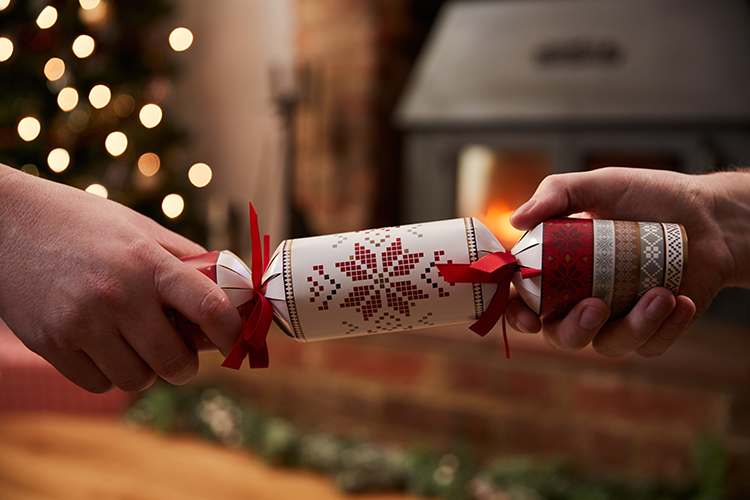
Photo: Stock Photos from MONKEY BUSINESS IMAGES/Shutterstock
The holiday toys known as “crackers” dates back to the mid-19th century when a London businessman parceled candies and sweet notes in crinkly paper. Modern Christmas crackers are very popular in the UK, and feature a tube containing a small toy, paper crown, or candy. Two party guests grab the cracker by its ends and pull, with the victor being the one with the larger piece. The paper crowns are often worn through dinner, and many believe the tradition dates back to the Roman December holiday of Saturnalia.
Lantern Festivals in the Philippines

The Barangay Telabastagan entry in 2012 which won third place. (Photo: Ramon FVelasquez via Wikimedia Commons [CC BY-SA 3.0])
For over 100 years, the Giant Lantern Festival known as Ligligan Parul has taken place in mid-December in the Philippines. Now hosted by the city of San Fernando, the barrios (neighborhoods) of the city create giant entries stretching 15 feet wide and full of thousands of light bulbs. Although a spirited contest, these spectacular lights are reminiscent of stars and hope during the Christmas season.
Mischievous Nisse in Denmark
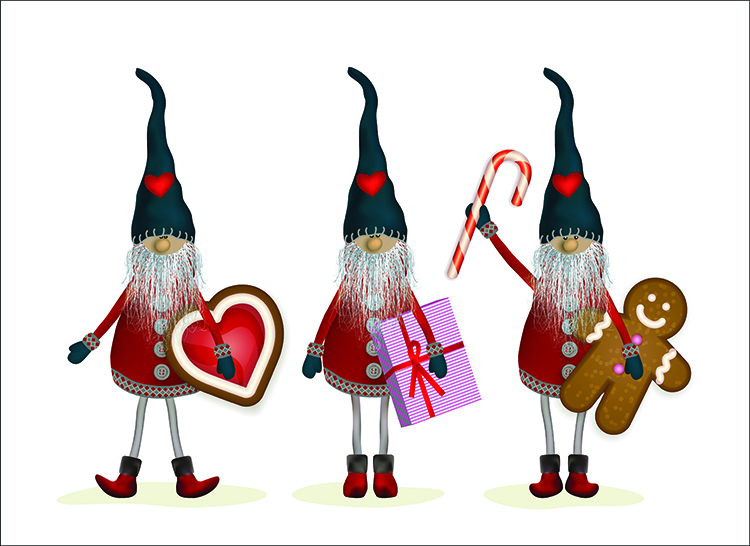
Photo: Stock Photos from SMSKA/Shutterstock
The Danish nisse is a Scandinavian folk-creature known for its short stature, white beard, and pointy cap. Although they go by different names in other Nordic languages, these mischievous spirits can be sweet guardians of the homes they inhabit. These little men deliver presents to children during the Christmas season—their reward is porridge with butter.
Christmas Markets in Germany
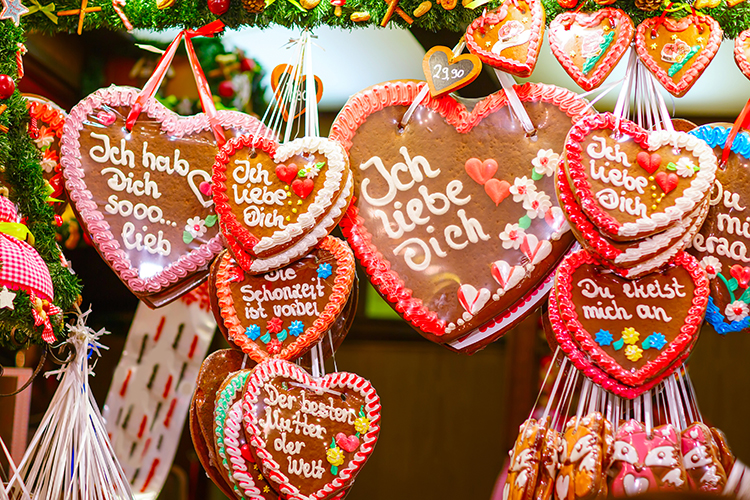
Photo: Stock Photos from ROMRODPHOTO/Shutterstock
Advent is an exciting time in Germany with the opening of historic Christmas Markets. The Striezelmarkt in Dresden began in 1434, and is the oldest Christmas Market. However, modern iterations now appear around the world. At the markets, you will find mulled wines, Christmas snacks, and many Christmas gifts to purchase. You will also find popular tokens of affection such as lebkuchenherzen—gingerbread heart ornaments.
Las Posadas in Mexico
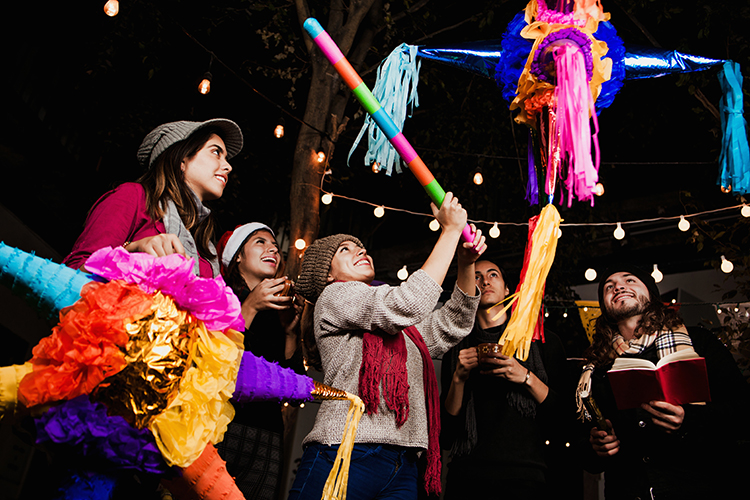
Photo: Stock Photos from MARCOS CASTILLO/Shutterstock
Between December 16 and Christmas Eve, Mexicans celebrate nine days known as posadas. These days of prayer, procession, piñatas, and feasting honor Mary and Joseph’s travels from Nazareth to Bethlehem. The festivities culminate with Christmas Eve mass and a large feast. Throughout the Christmas season, people also enact plays containing struggles between angels and devils called pastorelas. These traditions are also celebrated by other Latin American Christians and some American Latinx populations.
Decorated Boats in Greece
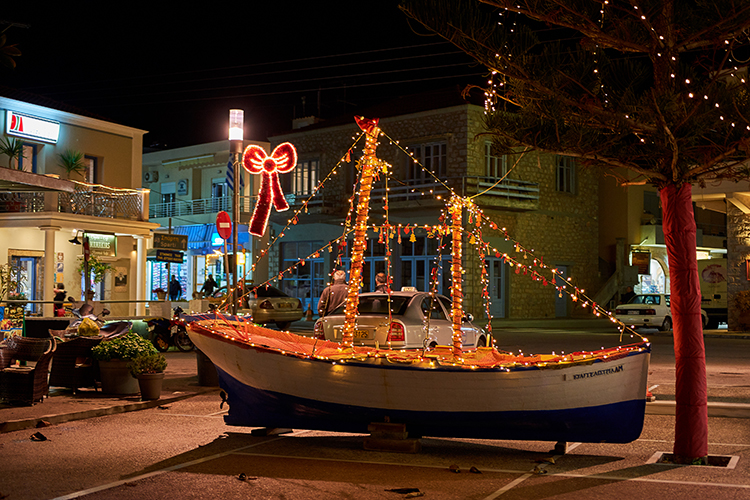
Photo: Stock Photos from PIT STOCK/Shutterstock
Christmas trees did not become popular in Greece until after World War II. However, the seafaring nation had ample boats to decorate during the Christmas season. Festooned with lights, the boats are a reminder of the importance of the seas in Greek life. This love of water is also important during Epiphany on January 6, known as Theophany. The faithful dive into the water to retrieve a cross thrown by a priest, which is said to bring blessings.
Surfing Father Christmas in Australia

Photo: Stock Photos from SIRTRAVELALOT/Shutterstock
For Australians, Christmas is in the summer months. Many Aussies take to the beach or to the backyard for barbecues. Father Christmas brings presents to children—sometimes surfing sans reindeer. Australians also love a good caroling session, with many popular community songs taking place in cities.
Sinterklaas Fills Shoes in the Netherlands
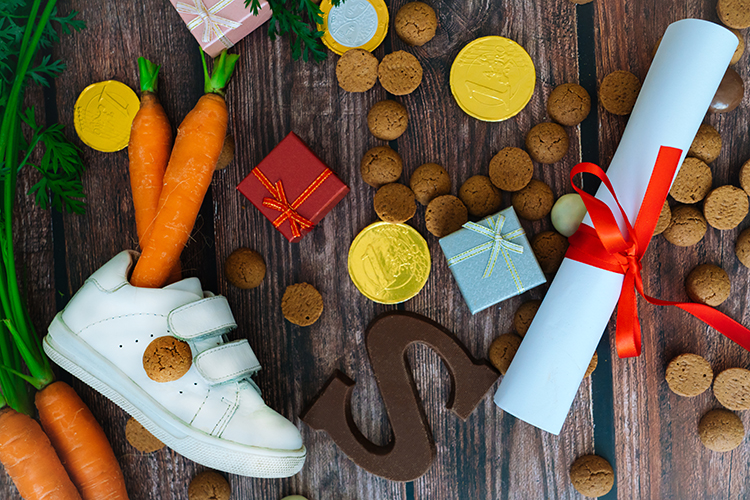
Photo: Stock Photos from OLENAPALAGUTA/Shutterstock
Sinterklaas, or Saint Nicholas, arrives on the eve of December 6 (his saint day) to bring presents to all the family. However, in the weeks leading up to this magical day, children leave their shoes out for Sinterklaas to fill with kruidnoten cookies, chocolate letters, and other treats. In return, the children leave out carrots for Sinterklaas’ white horses. Much of the modern figure of Santa Clause was drawn from the traditions of Sinterklaas, who also brings presents to children in Belgium and parts of the former Dutch empire.
Orthodox Processions in Ethiopia
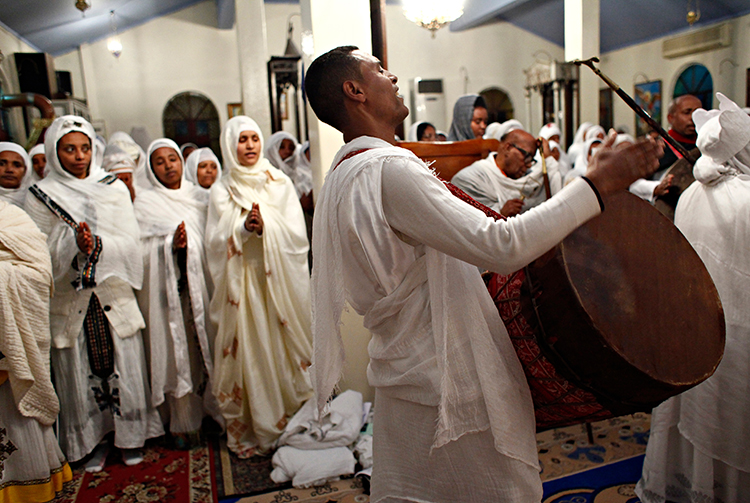
Photo: Stock Photos from ALEXANDROS MICHAILIDIS/Shutterstock
The Ethiopian Orthodox Church celebrates the birth of Jesus on January 7, a day known as Ganna. Proceeded by a fast, the faithful then rise for an early morning mass on Ganna where worshippers are dressed in white and take part in processions and special services through the church. There is also a game called ganna, which is traditionally played on the holiday by men and somewhat resembles field hockey.
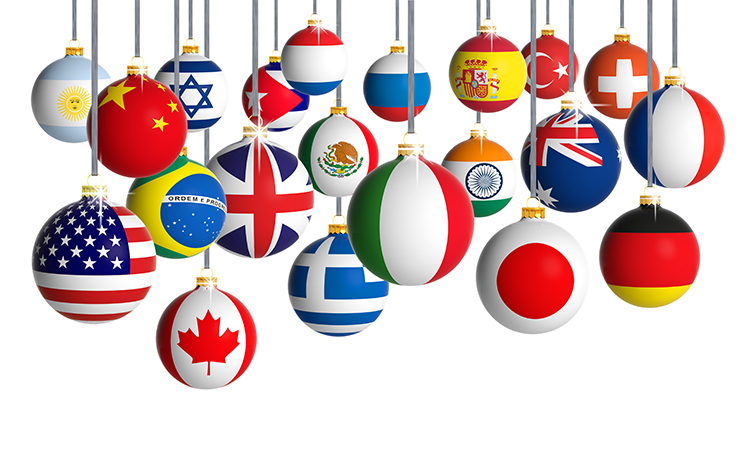
Photo: Stock Photos from GTS/Shutterstock
Related Articles:
30+ Creative Christmas Trees to Spark Your Holiday Imagination
20+ Unique Items to Complete Your Rustic Christmas Aesthetic
15 Unique Christmas Wrapping Paper Designs Created by Independent Artists
18 Contemporary Advent Calendars to Help You Countdown to Christmas in Style
